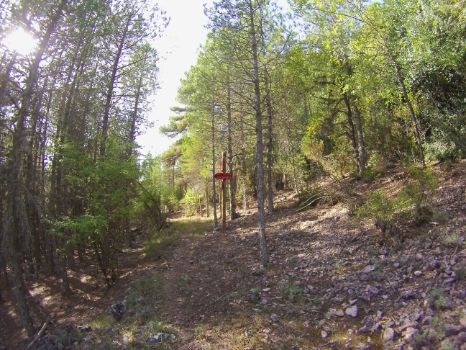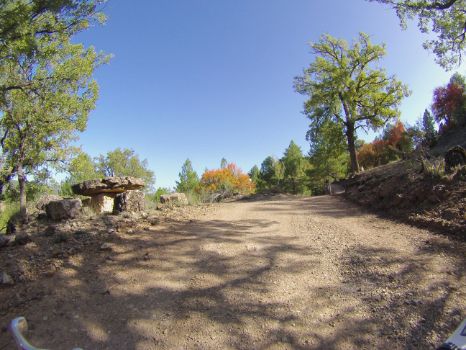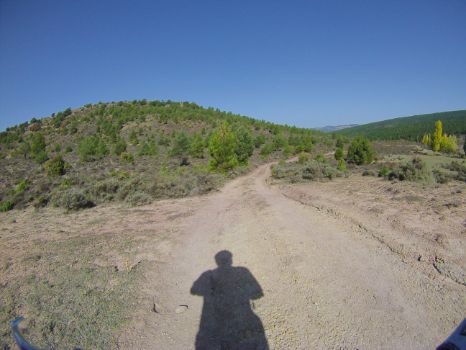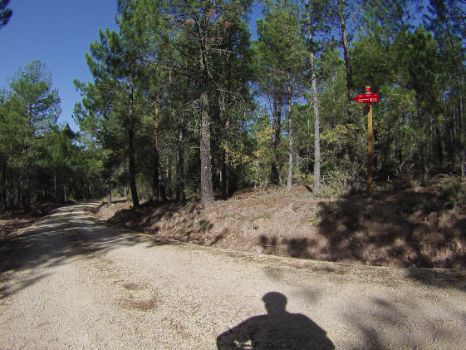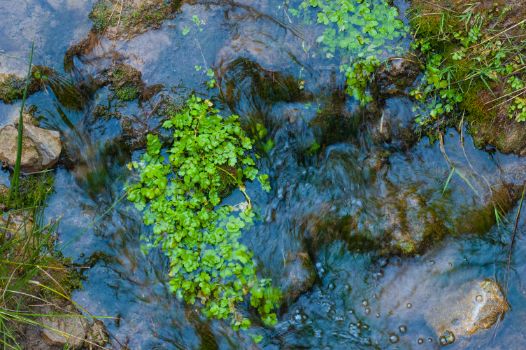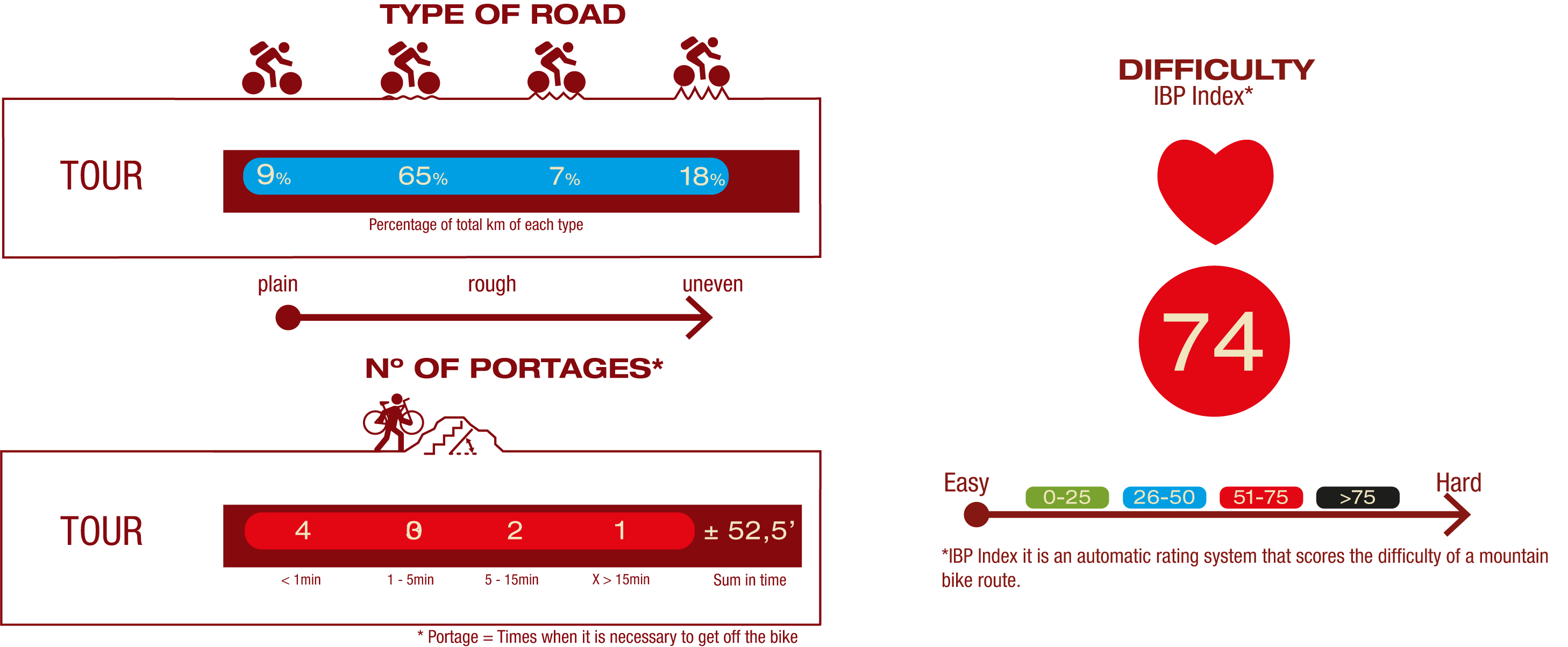
Net of Natural
Trails

Stage 3 Branch: Molino de Juan Romero Rest Area – Molino de Juan Romero Rest Area
Description
Skirting the Peña del Castellar and the Cerro del Noguerón.
A circular route that begins beside the River Júcar, in the Juan Romero Recreational Area and which, skirting the Peña del Castellar and the Cerro del Noguerón, visits some small tributaries of the Júcar, such as the Magdalena and Pedregoso streams. This unique journey shows an environment brimming of life.

This new stage begins beside the Caminos Naturales interpretative panel at the entrance to the Juan Romero Recreational Area. From this point, cross the CU-V-9112 road, which leads to the village of Beamud, exercising extreme caution. The route leaves behind on the right the old Juan Romero mill, on the banks of the River Júcar.
First you descend through a cemented section with logs arranged lengthwise that will make your bicycle bounce. Shortly thereafter the route returns to the dirt track, crossing, for the first time in this stage, the Magdalena stream, via an overpass that is also cemented with logs arranged lengthwise, located shortly before it empties into the River Júcar.

After this, you will leave the dirt track and ascend a slope with an uneven surface and loose stones, where you can see various pine trees dotted on either side of the slope. Following the Caminos Naturales markers, each easily distinguishable from the previous one, you will continue to climb up a stony path which sometimes tends to narrow.
Shortly before reaching kilometre point 2, you will arrive at a section with a wooden fence on the left. Here there is a wooden bench, which was installed there due to the spectacular views you can have from it, making it hard to resist stopping to enjoy the surroundings.

After this short break, continue uphill along the path through the pine trees until just after kilometre 3 of the stage, where the Caminos Naturales signs indicate a 90º left turn coinciding with the beginning of the pedestrian section and the descent. The route continues on a very attractive section through a pine forest, which at first gives way to gall oak (Quercus faginea) before reaching the gallery forest characteristics of the course of the Magdalena stream. At this point, you will cross this watercourse for the second time via a beautiful wooden bridge purpose built for this Júcar Nature Trail.

After crossing it for the second time, you will climb up to the CU-V-9112 road, where the pedestrian section ends. You then have to cross the road, exercising extreme caution, albeit this time you will be moving along a very wide path with a good surface, which will allow touring cyclists to return to this section again while enjoying their favourite sport.
The route continues mainly uphill, winding through a sparsely-wooded area featuring conifers alongside lush vegetation. This is undoubtedly a good place to visit in autumn, when the season offers a colourful spectacle that will delight the traveller’s senses.

After passing kilometre point 4, you will reach Peña del Castellar, an area brimming with history and legends that has been inhabited since ancient times. The next section, which has a gentle relief, advances through the fertile plain of the Noguerón stream, turning left towards the Rodenillo ravine. In these small river courses, riverside woodland is scarce, sometimes limited a few specimens of black poplar (Populus nigra) arranged in lines, always close to the watercourse.
After leaving kilometre point 6 behind, ascend for a few metres, before the route turns left along a poorly-defined path; you must pay attention to the Caminos Naturales markers that will indicate the direction to follow. The hiker will then approach the ruins of an old sheepcote, where in the past sheep were sheltered from the inclement weather.

Continuing along the trail, the route enters a new pine forest, where, after less than 200 m, it turns left onto a broad forest track that is in very good condition.
The descent continues, with no technical difficulties, making it easy to pass kilometre point 7 and, shortly afterwards, the Pedregoso stream, where a cemented platform enables traffic to pass without incident. After passing kilometre point 8, this path joins another of similar characteristics, which is the itinerary of stage 3 of the Júcar Nature Trail. The branch turns left, sharing the end of the stage with stage 3, crossing a small riverbed via a cemented platform, before soon reaching the pedestrian access to the Juan Romero Recreational Area. End point of this circular branch of the Júcar Nature Trail.
Sites of interest
Puntos de interés
Culture
Hydrography
Information
Municipality
Orography
Hostel
Profile
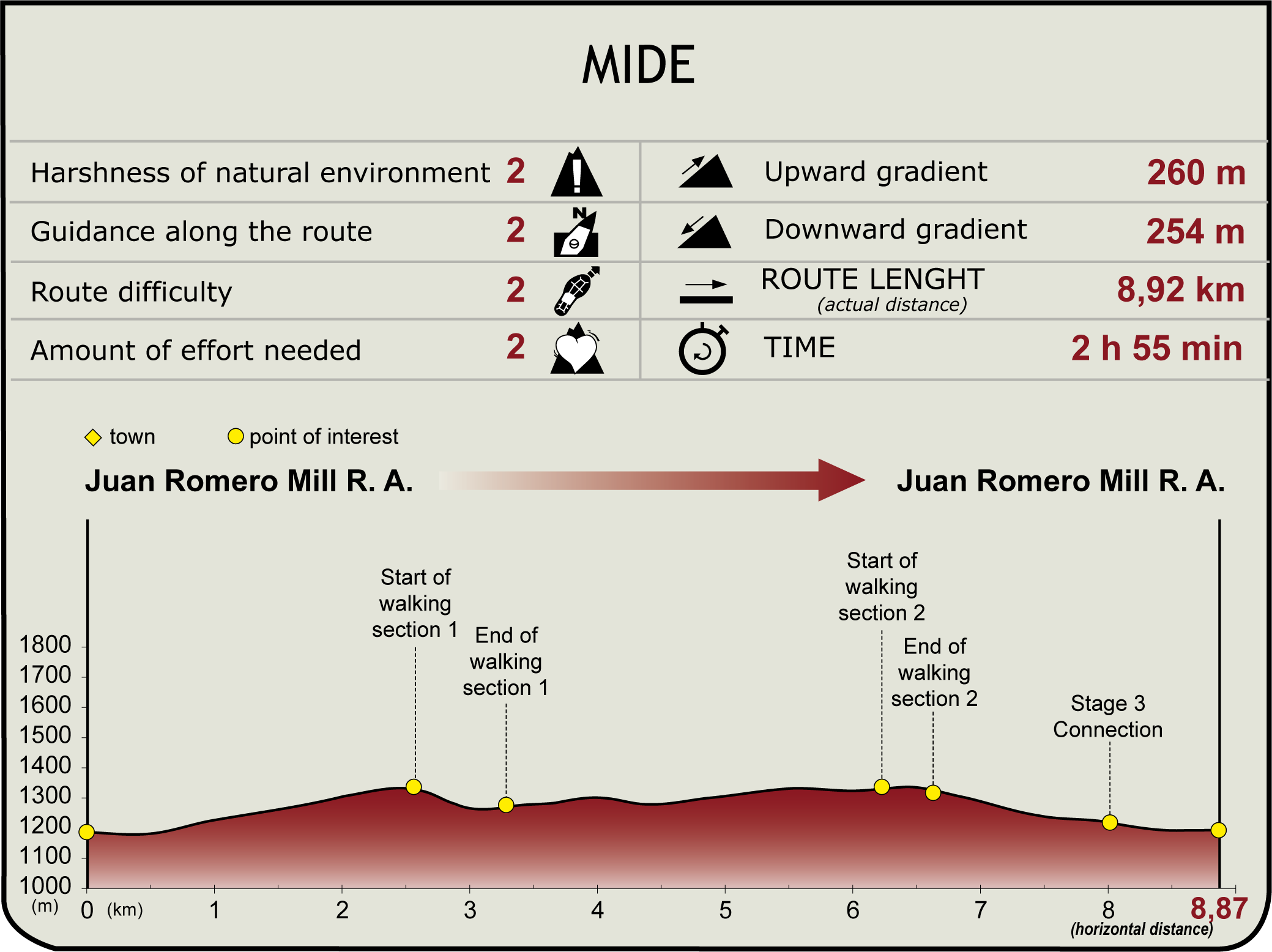
Highlights
Further information
Beamud
A village in the province Cuenca in the heart of the mountains, whose name is very clearly of Muslim origin. The village had been inhabited previously, as evidenced by Bronze Age sites found in the surrounding area. There is also evidence of a human presence in the Roman era, when the salt mines began to operate.
The main architectural heritage in this municipality is the parish church of Santiago, which suffered the convulsions of the Spanish Civil War, but it remains in good condition thanks to its restoration.
The village’s privileged natural setting, surrounded and sheltered by several valleys, means that it features numerous springs; it is possible to visit, among others, the Fuente de los Hontanares via a signposted route.
The patron saint festivities take place in honour of San Antonio de Padua in mid-August.
Multimedia
Downloads
GPS Downloads
Documents
Cyclability
TYPE OF ROADS, PORTAGES & DIFFICULTY
SAFETY RECOMMENDATIONS
- Mountain stages for cyclists with a walking section between them of more than 3 kilometres.
- You must exercise extreme caution and carefully read all the information aimed at touring cyclists and you must abandon the trip if in doubt.
- There are portages on both cycle stages, path sections, sections with rocky outcrops, sections with loose stones, challenging climbs and long descents.
- They run through an area of great scenic value with the risks inherent in the Serranía de Cuenca.
GENERAL RECOMMENDATIONS
- Find out about the technical aspects of the route and the weather on the day.
- Take care of the environment. Take care not to disturb animals or damage vegetation. Respect private areas.
- You must give priority to pedestrians and comply with general traffic rules.
- The environment in which you will be riding is open, free to move around and an area where many activities are carried out (sporting, forestry, livestock and agricultural activities). Always have an understanding, prudent, responsible and respectful attitude.



